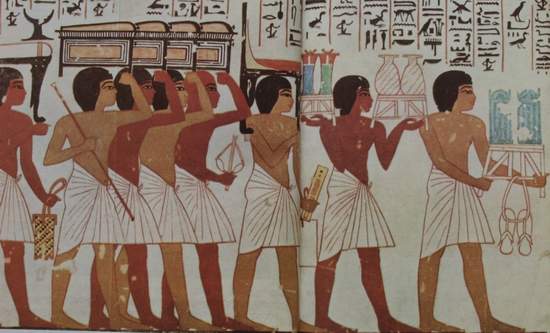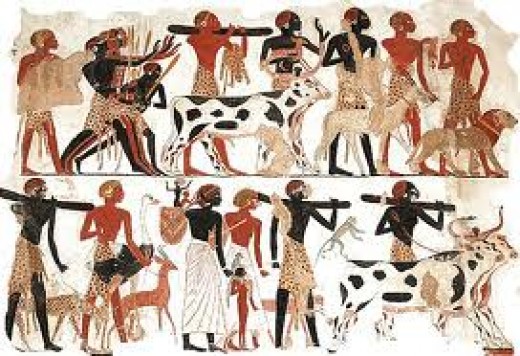A civilization is a complex society with established systems of urban development, communication, government, and social stratification. The world’s modern civilizations did not emerge but evolved over time. Egypt and Mesopotamia are two major ancient civilizations regarded as forerunners to modern civilizations.
Geographical location: Modern-day Kuwait, Iraq, Turkey, and Syria were all part of Mesopotamia, which was situated in the area now known as the Middle East. The two prehistoric terms “meso” (which means in the middle) and “potamos” are the source of the name Mesopotamia (which means river). Mesopotamia was situated in the productive lowlands between the Euphrates and Tigris rivers, as the name of the region suggests. The Sumerian, Babylonian, Assyrian, and Akkadian civilizations were all born in this area, along with many other of the world’s first human societies. The “Cradle of Civilization” label refers to Mesopotamia.
Once known as Kemet, the nation that is now known as Egypt. Along the banks of the Nile River, Egyptian civilization grew. The regular flooding of the Nile river, which maintained fertile soil for farming, was mostly to blame for this.

Religion : Ancient Egypt’s and Mesopotamia’s polytheistic, or numerous gods and goddesses, and naturalistic, faiths were both practised there. As well as deities that were committed to the underworld and human emotions, both civilizations featured deities who were associated with the sky, earth, freshwater, and the sun. To assure the best crops and, by extension, the best chance of survival, it was essential to maintain excellent ties with the gods. But the way that these civilizations saw the gods varied. The more difficult the floods was for Mesopotamians, the more gloomy they tended to be. In their minds, there was only a “Land-of-no-return” after death and their gods were erratic. Both civilizations grew around famous rivers to nurture and bring out the best in human beings striving to wrestle with the unknown. While Mesopotamia nestled between the Tigris and the Euphrates, Egyptian civilization prospered along the Nile.

Trade : Trading was a common feature in both the societies and commercial interaction with the outside world was more extensive in both places. Trade prospered as well as agriculture and new methods of farming were specially developed in Mesopotamia to combat the seasonal floods from the Tigris and the Euphrates.
Both were advanced societies : The societies were prosperous and commercially advanced where wealthy aristocracies dominated. The artisan and the merchant classes were also well developed, which is an aspect of Egypt and Mesopotamia similarities. The development in trade, commerce and agriculture led to an overall cultural progress unparalleled anywhere in the ancient world.
Religion : Ancient Egypt’s and Mesopotamia’s polytheistic, or numerous gods and goddesses, and naturalistic, faiths were both practised there. As well as deities that were committed to the underworld and human emotions, both civilizations featured deities who were associated with the sky, earth, freshwater, and the sun. To assure the best crops and, by extension, the best chance of survival, it was essential to maintain excellent ties with the gods. But the way that these civilizations saw the gods varied. The more difficult the floods was for Mesopotamians, the more gloomy they tended to be. In their minds, there was only a “Land-of-no-return” after death and their gods were erratic. The rivers that these civilizations were built around directly impacted the way they viewed their gods
Monumental Architecture : Egyptian civilization is known for monumental architectural feats such as pyramids. Although Mesopotamians were the first to develop the world’s first known arches, columns and roofed buildings, they mainly used mud bricks as construction materials.
Writing Forms : Writing form Mesopotamians invented a writing system called Cuneiform and had a tradition of epic literature that produced important works like “Epic of Gilgamesh,” which is the world’s earliest known written story. Egyptians, on the other hand, invented their own system of hieroglyphics, which are based on pictures. The writings were developed for keeping records of trade and accounts. Writing developed with pictograms used primarily for maintenance of accounts and record keeping during ancient times. The school system was unique in both civilizations and helped in the creation of scribes where boys were trained from a very young age.
Legacies of development : Among the greatest Mesopotamia and Egypt similarities is the imprint both civilizations left for future emulation. The first grain crops were planted, the wheel and sail were created, and the cursive writing system, mathematics, and astronomy were all developed during the height of Mesopotamian civilization. Egyptian culture made significant advances such as the invention of the solar calendar, papyrus sheets and ink, clocks, and cosmetic makeups. Egyptians made significant contributions to medicine as well, including the development of surgical instruments and mummification.
Position of women : There were lots of social similarities and the differences, if any, were not visible. Till the Sumerian rule in Mesopotamia, women power was predominant in both the societies. At a later stage after the exit of the Sumerians, the differences in treatment of women became more vivid. Egyptians and Mesopotamians till that time revered women. They held important positions especially among the upper classes as marriage forged alliances which helped in the preservation of the empire.